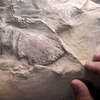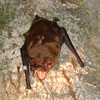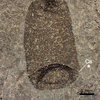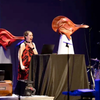Cool Things! (Vol 2.2)

Taking Social Distancing to a whole new level on the Drina River. Credit: Irene Becker
Hello, everyone!
Welcome to the March 2021 issue of Cool Things! Each month, we want to bring you news on scientific discoveries, historical information, and other interesting finds from across the internet. We have a lot to share today, so let's dive in!
🌟 New Things!
Last Friday, we launched the American History collection, a place where you can find all of our products featuring American accomplishments. We also went live with two new specimens: U.S. Capitol Steps and Muhammad Ali Punching Bag.
Together, these icons represent what is best about America: our constant struggle to become a more perfect union. Sometimes that process is painful and sometimes it may seem progress is impossible, but we always seem to rise to the challenge and persevere.

Over the past month we've been running the #mymuseum contest on Instagram and through email. We planned to finish last Friday, but we've had so much fun seeing everyone's submissions and getting a look at your beautiful collections that we're going to keep the contest running year round.
From now on, we'll be choosing one random winner each week to be featured and receive a $30 gift code for the site. In 2021, it has been more important than ever to stay connected and we are so happy that the Mini Museum community is excited to share their love of history and science with the world! Keep those submissions coming in and don't forget to use #mymuseum! You can find more contest details here!
Tasty Titanium: A Heavy Metal Food Coloring

Above: A smooth creme made from a not so smooth metal.
What do toothpaste, highway paint, and Oreo filling have in common? Titanium! It may sound strange, but the bright white coloring in these and many other products comes from titanium dioxide, a widely used pigment with a reflective, snow white color. Titanium white has an extremely high opacity, which allows it to completely mask the original color of compounds it's added to, giving them a pure white color.
Don't worry about eating too much titanium though. The pigment is nontoxic and completely safe to consume. Learn more about it here, and if you like titanium, check out these pieces from the SR-71 (though you probably shouldn't eat them).
The Superstitions of Charles Darwin

Above: An illustration from 1855 depicting a Victorian Water Cure and an unfortunate hair style.
When plagued with insomnia, vomiting, and anxiety, Charles Darwin turned to the alternative cures of water treatments and clairvoyants. A surprising choice for a scientist and the father of evolution, but one that was influenced by the time he lived in. Victorian culture was a paradoxical mix between reason and belief, with both driving different aspects of life. This essay from Maria Popova explores Dawin's relationship with Victorian medicine and his struggle with grief when his daughter Anne became fatally ill with tuberculosis. You can read the full story here.
Blueberry Beads!

Above: They look delicious, but we'd advise against eating them. Credit: American Antiquity January 2021
Archaeologists have uncovered these beautiful glass beads from an ancient trading post in northern Alaska. Punyik Point, a spot along trade routes from the Bering Sea to the Arctic Ocean, has been studied by researchers for years to learn about the migration of early humans. These beads stand out as particularly interesting specimens since they aren't exactly from the area: they're from Venice, Italy. Carbon dated to the mid 1400s, they may be the earliest artifacts to travel from Europe to North America. How did they end up there? Check out the story to find out.
Strangely enough, this actually relates to two specimens of our own: Neolithic Beads and Venice Brick. This isn't the first time two seemingly unrelated artifacts have linked up and goes to show how expansive and interconnected the history of our world really is!
Into the Abyss: An Interactive Web Experience

Above: The Twilight Zone from Neal Agarwal's The Deep Sea.
At its deepest point, Earth's seabed reaches 10,924 meters. It's an impressive number, though not one that's easy to conceptualize. If you want a real taste of the scale of the ocean, check out Neal Agarwal's page "The Deep Sea." Scroll your way through the oceanic zones while seeing what creatures make their homes there, plunging deeper and deeper… hopefully you can make it to the bottom before your browser busts a leak.
If a Tree Falls in a Forest Does It Leave a Fossil?

Above: Excavating a massive petrified tree. Credit: CNN
If there happens to be a volcanic eruption going on, the answer is yes! A 64 foot long petrified tree from 20 million years ago has been uncovered in Lesbos, Greece. This is one of many finds in the Lesbos Petrified Forest which formed during an eruption that smothered the island in ash. This find is especially unique though thanks to the bountiful branches and complete root system that was fossilized along with the trunk Learn out more about this incredible discovery here.
That's it for now, but we'll leave you with photo from a winner of our #mymuseum contest. Jessi C. sent us this photo of her insect collection meeting one of their ancestors! There's a 60 million year difference between them, but you can still see plenty of similarities. Looks like there's lots to talk about at this family reunion!

Featured Product
Joe Frazier Boxing Glove
Cool Things!

Is “Paul is Dead” Dead?: Unpacking One Of Pop Culture’s Most Enduring Conspiracy Theories

Scientists Discover Hooves and Skin in Preserved Dinosaur "Mummies!"
A dinosaur discovery just in time for Halloween! In a new analysis of a group of fossils from Wyoming, Scientists have determined this group of fossils are dinosaur “mummies,” with preserved skin and even hooves.

Scientists Record a Bat Catching Birds Mid-Flight!
Bats, birds, screeches, oh my! In a reverse-Hitchcock twist, a new study reveals that a species of European bat catches and eats birds mid-flight.
Specimen Deep Dives

The House that Ruth Built: The Story of the Old Yankee Stadium

The Queen of the Skies: the Story of the Boeing 747

Old Ironsides: The USS Constitution and the Start of the U.S. Navy
Long Form Articles

The Artist Behind the Macintosh: Susan Kare and Apple Computers
While the two Steves, Jobs and Wozniak, are the most well known faces behind Apple computers, equally important to the products and culture of the company were those who crafted the experience of using their computers through design. The most notable of these visual architects was Susan Kare, a designer responsible for “humanizing” Macintosh computers.

Can I Lick It? Yes You Can!
Have you ever been unable to tell if a fossil was really a fossil, but you were too embarrassed to admit it? Have you ever wanted to lick a fossil just because, but you didn’t want to risk judgment from your peers? Well, good news! You can kill two birds with one stone! Licking a fossil can actually help you determine if it’s the real deal or just another rock.

Is It Legal To Own a Meteorite: How to Start Your Outer Space Collection!
Meteorites are some of the rarest geological specimens to be found on Earth. Of course, since these stones are not of our world, purchasing them can sometimes be a confusing process. Is it legal to own a meteorite? In short, yes! Read on for help starting your cosmic collection!


















